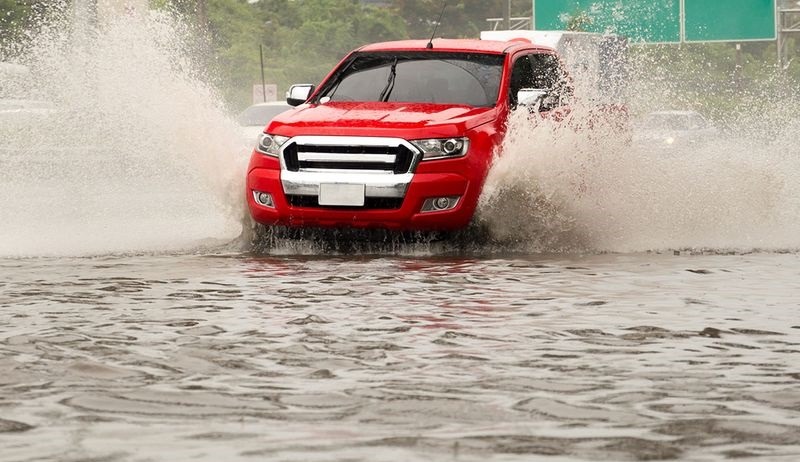If you’re driving and you are confronted with the possibility of driving through flooded roads, your first option should be to avoid it if you can. However, if you’re stuck with no other route except driving through a flooded road, then you should proceed with great caution. Here are some tips that can help you drive through without wrecking your car.
Stick to the Centre
What part of the road would you consider the safest during flood conditions? Don’t be tempted to follow lanes. Rather, stick to the centre of the road. Flooded roads tend to be shallow in the central point of the road.
Watch Other Cars Drive Through
Never rush your car into a flooded road. Before you go in, hold on for a minute or two and watch other cars drive through the flooded road. As you do this, also keep an eye on the type of cars driving through the road. This strategy will help you achieve two things. First, it will help you find out if your car will not break down in the middle of the flooded road. The second thing you will achieve with this is that it helps you spot the safest spots of the flooded road before you head into the road.
Take Turns With Other Drivers
It is safer for you to create a single lane behind the driver in front of you. There’s no point rushing and splashing water on other cars. By doing this, the car in front of you will help you move water out of the way to create better traction for your vehicle.
Always remember that driving through a flooded road is already a stressful thing to do. You don’t want to make it worse by riling other drivers by trying to speed past them
Keep an Eye on the Water Level and Vehicle Tyres
Did you you know that your car has a high tendency to lose control badly with only 15cm (a little over a one-half inch) of water; especially when you are driving at a high speed.
The secret formula here is that you should do everything you can to avoid driving through any flooded road that has water rising above the centre of your wheels. This also includes puddles.
Drive Slowly
Driving through a flooded road is by default, a complicated experience, especially if you are not driving a car built for the rainy season. You don’t want to make things worse by trying to drive at a high speed.
Experts suggest that if you have to drive through flooded roads, enter at 2-4km/hr and then drive at 5-7km/hr to avoid flooding your engine.
Drive Using Low Gear
One thing you can do to protect your car while driving through flooded roads is to drive in low gear. If you’re driving an automatic vehicle, you should strive to keep the speed low enough to stay within the first or second gear. Keep your foot on the gas and then, use the brake to regulate the speed of the vehicle.
Get Your Brakes Dry
The moment your car is out of the flooded road, you shouldn’t spin out. Rather, you should try to get your brakes dry by braking lightly while driving very slowly.
Stay Away From Flooded Roads With Moving Water
The only thing worse than driving through flooded roads is driving through flooded roads with moving water. The moment you notice that a flooded road has moving water, you’re better off looking for an alternative route or parking your car and seeking an alternative means of getting to your destination.
The only exception to this is if you are driving a vehicle that is designed to drive through flooded roads. Such cars have a high wading height/depth/capacity.
The ‘Wading Height’ or ‘Wading Depth’ is the limit of how the car can safely run through a flood. It is set by the manufacturer of the vehicle in centimetres and is determined by a number of crucial factors.
Factors that impact a vehicle’s Wading Depth include the location of sensitive electronics, the air intake, and other vulnerable areas.
Don’t Try to Restart You Engine If Your Car Floods
If your car gets flooded, you should never try to restart the engine. This could cause severe damage to your engine. The moment such a damage sets in, you might find yourself in a situation where you have to strip your strip the engine.
If your car floods, Before the engine gets restarted, the plugs and injectors need to be removed. At this point, you’re better off exiting the vehicle and heading towards higher grounds. Remember that the vehicle should not be driven even if the water recedes.
Final Thoughts on Driving Through Flooded Roads
If you reside or work in a neighbourhood that’s prone to flooding during the rainy season, we have two suggestions that could help you. The first suggestion is to create several evacuation/alternative routes that can help you avoid flooded roads, especially those with moving water.
The second thing you can do is to buy a car that has a high wading depth. These are cars that are built to get you through flooded roads without a fuss.
